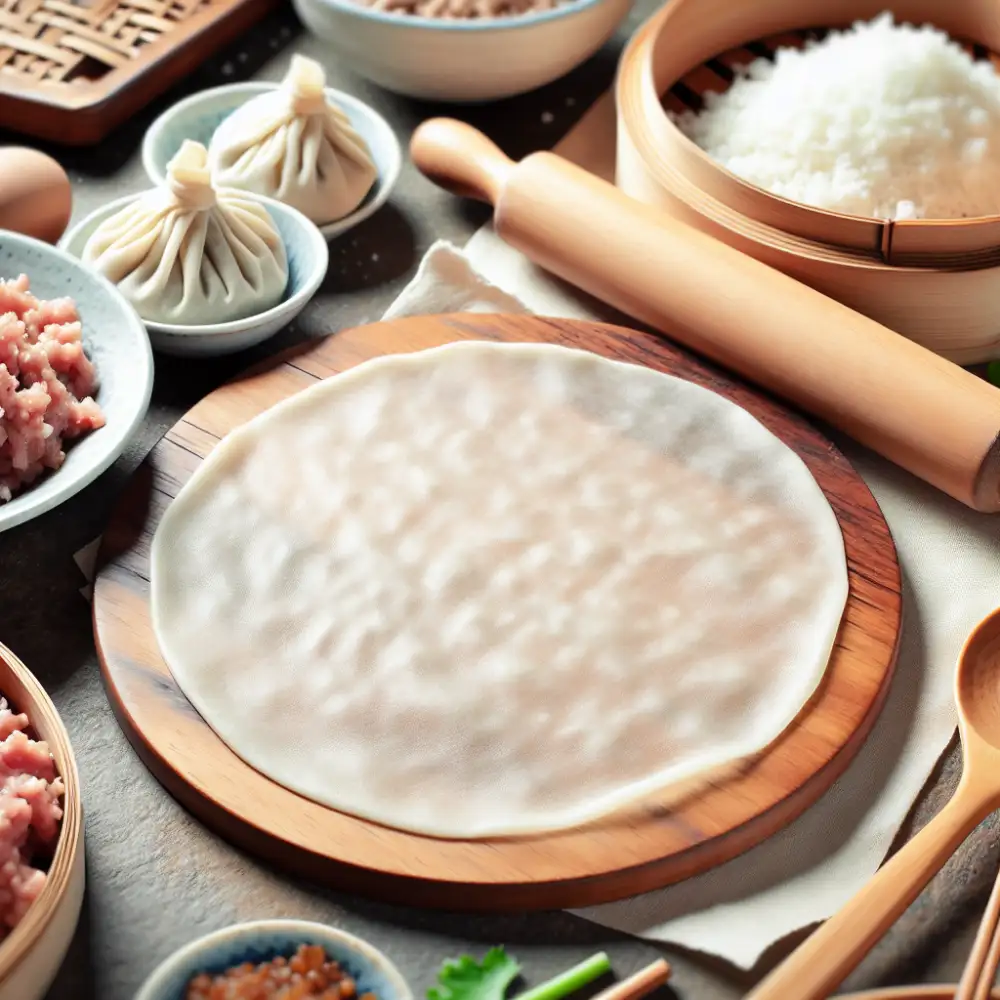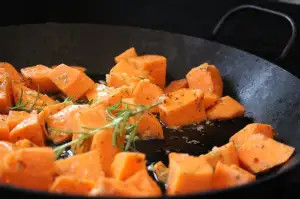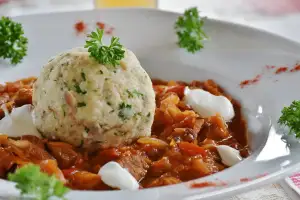Wondrous Wonton Wrappers: Unleashing the Versatility of this Asian Culinary Essential

Wonton wrappers are thin sheets of dough made from flour, water, and sometimes eggs. They are a staple in Asian cuisine, particularly in Chinese cooking. These versatile wrappers are used to encase savory fillings and can be steamed, boiled, fried, or baked. Wonton wrappers have a delicate texture and are known for their ability to hold various ingredients while adding a satisfying crunch or chewiness to dishes. Whether used in soups, dumplings, or desserts, wonton wrappers add a unique touch to culinary creations.
History and Origin of Wonton Wrappers
Wonton wrappers have a rich history dating back to the Tang Dynasty in China (618-907 AD). Originally called "Hundun," these thin sheets of dough were filled with minced meat and seasonings. The name "wonton" is believed to have originated during the Song Dynasty (960-1279 AD) when they became a popular street food. Wontons eventually spread beyond China, becoming a staple in various Asian cuisines like Japanese gyoza and Korean mandu. Today, wonton wrappers are widely used in both traditional and fusion dishes worldwide, showcasing their enduring appeal and versatility.
Types and Varieties of Wonton Wrappers
When it comes to types and varieties of wonton wrappers, there is a wide range to choose from, each offering a unique texture and flavor profile. The most common type is the thin square wrapper made from wheat flour, water, and salt. These are versatile and perfect for making traditional wontons or dumplings.
For those looking for a healthier option, there are whole wheat or gluten-free wonton wrappers available in specialty stores. These variations offer a nuttier flavor and can cater to dietary restrictions.
In addition to the traditional square shape, round wonton wrappers are also popular, especially in Japanese cuisine where they are used for dishes like gyoza. These wrappers are slightly thicker than their square counterparts and provide a chewier texture when cooked.
Another interesting variety is the colored wonton wrappers which add an aesthetic appeal to dishes. These colorful wrappers are often made using natural ingredients like spinach for green wrappers or beetroot for pink ones.
Overall, the diverse range of wonton wrapper types allows for creativity in the kitchen and opens up endless possibilities for experimenting with different flavors and textures in Asian-inspired dishes.
How to Use Wonton Wrappers in Cooking
Wonton wrappers are incredibly versatile and can be used in various cooking methods. One common way to use wonton wrappers is to make dumplings by filling them with a mixture of minced meat, vegetables, and seasonings, then folding and sealing them into desired shapes. These dumplings can be boiled, steamed, or fried depending on the recipe. Wonton wrappers can also be used to make crispy appetizers like wonton chips or cups by cutting them into strips or squares and frying or baking until golden and crisp. Additionally, they can be used to wrap ingredients for spring rolls or egg rolls before frying for a crunchy exterior. The possibilities are endless when it comes to using wonton wrappers in cooking, making them a staple in Asian cuisine and beyond.

Popular Recipes Using Wonton Wrappers
Wonton wrappers are incredibly versatile and can be used in a variety of delicious recipes. One popular dish is Wonton Soup, where the delicate wrappers are filled with a savory mixture of minced pork, shrimp, and seasonings, then boiled in a flavorful broth. Another favorite is Fried Wontons, where the filled wrappers are deep-fried until crispy and golden brown, perfect for dipping into sweet and sour sauce.
For those looking for a healthier option, Baked Cream Cheese Wontons are a crowd-pleaser. These creamy and crunchy bites are made by filling the wrappers with a mixture of cream cheese, green onions, and spices before baking them to perfection. Additionally, Wonton Tacos have gained popularity as a fusion dish, where the crispy wonton shells are filled with seasoned meat, veggies, and toppings like avocado and salsa.
Whether you prefer your wontons steamed, fried, baked or used as taco shells, there's no shortage of creative ways to incorporate these versatile wrappers into your cooking repertoire.
Wonton wrappers: thin sheets of culinary possibility, waiting to be transformed into savory parcels of delight.
Elara Nightshade
Tips for Handling and Storing Wonton Wrappers
When handling wonton wrappers, it's essential to keep them covered with a damp cloth or plastic wrap to prevent them from drying out and becoming brittle. This will make the wrappers more pliable and easier to work with during the wrapping process. Additionally, ensure that your work surface is clean and lightly dusted with flour to prevent sticking.
To store wonton wrappers, keep them in their original packaging or an airtight container in the refrigerator. Proper storage helps maintain their freshness and prevents them from drying out. Before using refrigerated wrappers, allow them to come to room temperature for about 15-20 minutes to make them easier to separate without tearing.
If you have leftover wonton wrappers, freeze them for future use. Place individual sheets on a baking sheet lined with parchment paper and freeze until firm. Then transfer the frozen wrappers to a resealable plastic bag, removing as much air as possible before sealing. Frozen wonton wrappers can be stored for up to three months and thawed in the refrigerator before use.

By following these tips for handling and storing wonton wrappers, you can ensure that they remain in optimal condition for all your culinary creations.
In conclusion, wonton wrappers are a versatile and essential ingredient in Asian cuisine that can be used in a variety of dishes, from dumplings to desserts. Their history dates back centuries, originating in China and spreading throughout Asia and beyond. With different types and varieties available, including traditional wheat-based wrappers and modern alternatives like gluten-free or vegan options, there is something for every culinary preference. When handling wonton wrappers, it's important to keep them moist to prevent drying out and cracking. By following proper storage techniques and creative cooking methods, anyone can unleash the full potential of wonton wrappers in their kitchen. So next time you're looking to add a touch of Asian flair to your meals, consider incorporating these wondrous wonton wrappers for a delicious culinary experience.
Published: 12. 04. 2024
Category: Food



